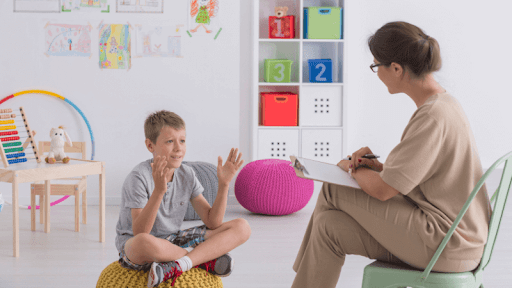The Key Person Approach in Early Years
Understanding Attachment and Promoting Secure Relationships
As parents or carers, we all want to support the healthy development of our young children. One crucial factor that research has consistently shown to influence children’s emotional, social, and cognitive growth is their attachment to their key person.
In this article, we will explore the concept of attachment in early years and how it impacts children’s well-being. We will also provide practical tips for promoting secure attachment to support lifelong development and well-being.

The Key Person
The key person approach is a crucial aspect of early years care and education, focusing on building secure attachment relationships between children, their key person, and their families.
The key person is a designated practitioner responsible for ensuring that each child’s care and learning needs are met and that they feel safe, secure, and valued in their setting.
The key person’s role involves developing a positive and secure relationship with the child and building trust and understanding through responsive and sensitive care. They will observe, assess, and plan for each child’s learning and development needs and work with parents to ensure continuity of care and support. Communication between the key person and parents is paramount, as it allows for sharing important information about the child’s needs and interests.
The key person approach is set out in the UK’s Early Years Foundation Stage (EYFS) and is considered an essential component of high-quality early years provision. Through the key person approach, children can develop secure attachments with their caregivers, which lay the foundations for positive emotional, social, and cognitive development throughout their lives.
What is attachment, and why is it important?
 Attachment is used in clinical settings to describe the lasting psychological connection between human beings.
Attachment is used in clinical settings to describe the lasting psychological connection between human beings.
Attachment theory highlights the importance of a child’s emotional bond with their primary caregivers, usually their mother or father, as these early experiences shape their beliefs and expectations about themselves, others, and the world around them. The quality of attachment is classified into secure and insecure attachment, with the secure attachment being essential for healthy emotional regulation, social skills, and cognitive functioning.
The secure attachment connects to a child feeling safe, comforted, and protected by their caregiver. A secure attachment bond is a foundation for future relationships and provides the child with stability and security. It promotes healthy development, including regulating emotions, forming healthy relationships, and developing cognitive and language skills.
In contrast, insecure attachment, which can result from inconsistent or insensitive caregiving, can lead to adverse outcomes such as anxiety, aggression, and poor academic performance. Insecure attachment can make it challenging for a child to develop healthy relationships and self-esteem and may result in mental health issues later in life.
Therefore, promoting secure attachment in early childhood is crucial to set children on a positive trajectory for lifelong development and well-being. Caregivers can foster secure attachment by being responsive and sensitive to their child’s emotional and physical needs, providing consistent and predictable care, and engaging in play and exploration together. By doing so, caregivers can promote healthy attachment, which can positively impact a child’s overall well-being.
How Can Nursery Workers Promote Secure Attachment?
 To promote secure attachment, we can follow evidence-based strategies to promote secure attachment in young children. The include:
To promote secure attachment, we can follow evidence-based strategies to promote secure attachment in young children. The include:
- The first tip is to learn and understand the baby’s unique cues. It means paying attention to the baby’s facial expressions, body language, and vocalizations to understand their needs and respond promptly and appropriately.
- The second tip is to ensure that the baby has regular opportunities for eating, sleeping, and interacting with their caregivers.
- Establishing consistent routines and patterns of interaction can help build a sense of security and predictability for the child.
- Engaging in talk, laughter, and play with children. These interactions provide opportunities for social, emotional, and cognitive development and help build a positive relationship between the child and caregiver. It is also important to remember that secure attachment can be challenging for parents or carers.
- Making mistakes and learning from them can help build resilience and trust in the relationship.
- Finally, it is essential to recognise the role of fathers in promoting secure attachment. Fathers can be crucial in providing emotional support and bonding with their children.
By following these evidence-based strategies, parents and carers can promote secure attachment in young children, setting them on a positive trajectory for lifelong development and well-being.
The Key Worker Approach - Key things to do
1. Be Responsive and Sensitive to Your Child's Cues
 To promote the keyworker approach we must be responsive and sensitive to children’s cues to promote secure attachment, as highlighted in attachment theory.
To promote the keyworker approach we must be responsive and sensitive to children’s cues to promote secure attachment, as highlighted in attachment theory.
It involves paying close attention to children’s emotional and physical needs and responding promptly and appropriately. For example, if the child is crying, it is essential to identify what they need and soothe them with a gentle touch or soothing voice. Similarly, if the child smiles, responding with positive facial expressions and words can help reinforce their behavior.
Through these small but frequent interactions, parents and carers can help build trust and a sense of security in the child, which is essential for their emotional and social development. Parents and carers can establish a positive and secure relationship with their child by being responsive and sensitive to the child’s cues, setting them on a positive trajectory for lifelong well-being. It is also crucial for parents and carers to be emotionally aware, communicate openly, and examine their beliefs about relationships to work toward creating a secure attachment.
Being responsive and sensitive to a child’s cues is crucial for fostering secure attachment and establishing a positive relationship with the child.
2. Provide Consistent and Predictable Care
 Establishing consistent routines is critical to providing quality care for young children. By establishing regular times for eating, sleeping, and playing, parents and caregivers can create a stable and predictable environment that helps children feel secure and build a sense of trust in their caregivers. Children thrive on routines and predictability, as it helps them develop a sense of stability and consistency in their daily lives.
Establishing consistent routines is critical to providing quality care for young children. By establishing regular times for eating, sleeping, and playing, parents and caregivers can create a stable and predictable environment that helps children feel secure and build a sense of trust in their caregivers. Children thrive on routines and predictability, as it helps them develop a sense of stability and consistency in their daily lives.
Consistent patterns of interaction and communication with the child also play a vital role in building a sense of security and trust in their caregiver. Parents and caregivers can establish a positive and secure relationship with their children by responding promptly and appropriately to their needs and being attuned to their emotional and physical cues. It helps to set them on a positive trajectory for lifelong development and well-being.
Additionally, consistent care can also encourage positive behavior in children.
A well-planned routine helps children understand the childcare environment, reduce anxiety by knowing what comes next, and meet their basic needs for eating, sleeping, active, and quiet play. It can help encourage positive behavior and reinforce a sense of stability and consistency in their daily lives. Overall, establishing consistent routines and patterns of interaction is a crucial aspect of providing quality care for young children.
3. Engage in Play and Exploration Together
 Engaging in play and exploration together is essential for children’s social, emotional, and cognitive development. When parents and caregivers play with their children, they provide a safe and stimulating environment to learn and grow. Following the child’s lead and providing age-appropriate toys, games, and activities that encourage creativity, problem-solving, and social interaction is vital.
Engaging in play and exploration together is essential for children’s social, emotional, and cognitive development. When parents and caregivers play with their children, they provide a safe and stimulating environment to learn and grow. Following the child’s lead and providing age-appropriate toys, games, and activities that encourage creativity, problem-solving, and social interaction is vital.
Parents and caregivers can also use play as an opportunity for language learning. They can incorporate singing appropriate songs for the child’s age or put a melody to their actions. For instance, they can sing “Block by block; we’re building a dock, building a dock…” while playing with building blocks. Repetition is vital in language learning, so parents and caregivers should frequently repeat these activities to help the child develop their language skills.
Research has shown that play-based learning can significantly benefit children’s learning outcomes. Play-based learning supports children’s natural curiosity and motivation to explore and learn. It also allows them to develop critical thinking, problem-solving, and social and emotional competencies. Therefore, parents and caregivers should incorporate play-based learning into their daily routines to provide a fun and effective way for children to learn and develop.
Conclusion
In summary, the key person approach emphasises the importance of secure attachments in early childhood for children’s well-being and development. By being responsive and sensitive to your child’s needs, providing consistent care, and engaging in play and exploration, you can promote secure attachment and set your child on a positive trajectory for lifelong development and well-being.
FREQUENTLY ASKED QUESTIONS
Q: What is the Key Person’s Approach in the Early Years?
A: The Key Person Approach is used in Early Years settings to support children’s emotional and social development. It involves assigning each child a specific Key Person responsible for building a strong and secure relationship with the child and their family. The Key person serves as a point of contact for the child and their family, providing support and reassurance and helping meet the child’s needs.
Q: What is the Key person’s role in promoting secure relationships?
A: The Key Person is crucial in promoting secure relationships by providing the child with a consistent and secure base. They build a strong relationship with the child, which helps the child to feel safe and secure in their environment. The Key person also supports the child’s emotional and social development by responding sensitively to their needs and helping them to build positive relationships with others.
Q: How can Early Years settings adopt the Key Person Approach?
A: Early Years settings can adopt the Key Person Approach by carefully considering policies to support children, practitioners, and parents. It includes safeguarding, communication, and learning and development policies, which need to address the Key person’s role. Early Years settings also need to provide training and support for practitioners to help them develop the skills and knowledge needed to be effective Key Persons.
Q: How is the Key Person’s Approach beneficial for children’s development?
A: The Key Person Approach benefits children’s development in many ways. Children can form secure attachments and feel safe and supported in their environment by having a consistent and trusted adult in their lives. It helps to promote positive emotional and social development and can lead to better outcomes later in life. The Key person can also help identify and meet each child’s needs and provide personalised support and care.
Q: How can parents support the Key Person Approach?
A: Parents can support the Key Person Approach by communicating regularly with their child’s Key Person and building a positive relationship with them. They can share information about their child’s likes, dislikes, and routines to help the Key person better understand and support the child. It is also crucial for parents to be supportive and involved in their child’s learning and development and to provide a consistent and secure environment.
Q: What qualities should a Key Person possess?
A: A Key Person should possess many qualities, including strong communication skills, empathy, patience, and a willingness to build positive relationships with children and their families. They should be knowledgeable about child development and able to respond sensitively to each child’s individual needs. The Key person should also be reliable and consistent in their care and able to work collaboratively with other practitioners and professionals.
Q: How can the Key Person Approach be adapted for children with additional needs?
A: The Key Person Approach adapts to children with additional needs by providing personalized support and accommodations to meet their needs. The Key person can work closely with other practitioners and professionals, such as speech and language or occupational therapists, to provide integrated and comprehensive care. It is also essential to involve the child’s family in the planning and implementation support strategies and to provide ongoing support and communication.



